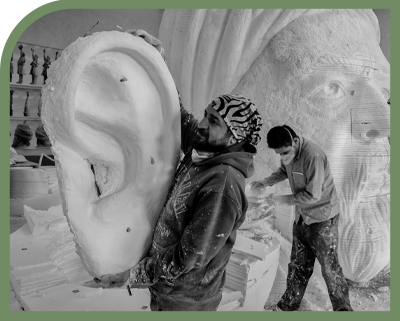

Mohsen Seraji / Creativity Manager and Futurist
Giant sculptures have long been recognized as powerful symbols in public and urban spaces. These large-scale artworks, with their tangible presence, not only enhance the aesthetic appeal of their surroundings but also convey cultural and social messages to the community. Beyond reflecting the identity and history of a place, giant sculptures serve as emblems of power, culture, and the unique ideologies of a nation or society. In the modern world, these sculptures can profoundly influence urban spaces and the way people interact with their environment.
One of the most significant characteristics of giant sculptures is their ability to create symbolic spaces and capture attention. These artworks are often placed in accessible public areas, allowing various segments of society to engage with them directly. Large sculptures in squares, parks, and other central urban locations not only function as striking visual elements but also communicate cultural, social, or historical messages. For instance, war memorials or statues honoring influential historical figures are frequently positioned in the hearts of cities, transforming these sites into places for reflection and respect.
These sculptures also play a pivotal role in redefining public spaces. Urban areas previously used solely for transit can be transformed into spaces for pause, contemplation, and social interaction through the installation of a giant sculpture. Such artworks can foster closer connections among people, strengthen collective identity, and enhance the sense of belonging to a place. In many cases, these sculptures become landmarks for both tourists and local residents, indirectly contributing to the city's economic and cultural growth.



Giant sculptures, in addition to being recognized as cultural symbols, can also serve as tools for expressing contemporary concepts. Modern artists utilize these sculptures not only to address historical themes but also to raise questions and provoke thought about social challenges. For example, large-scale sculptures can vividly and strikingly depict issues such as climate change, human rights, or social inequalities.
Ultimately, giant sculptures act as cultural icons, leaving profound impacts on urban spaces and social interactions. These works of art not only enhance the visual and artistic appeal of their surroundings but also convey messages of history, culture, and societal identity to different generations. As a result, they become an inseparable part of urban identity.


